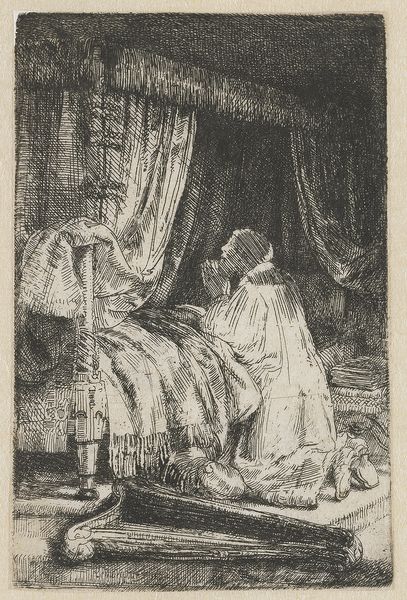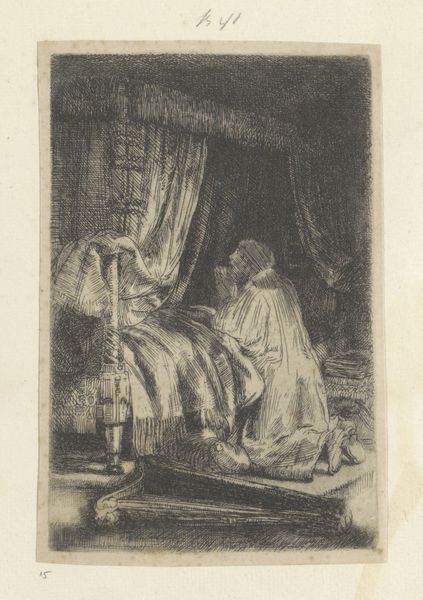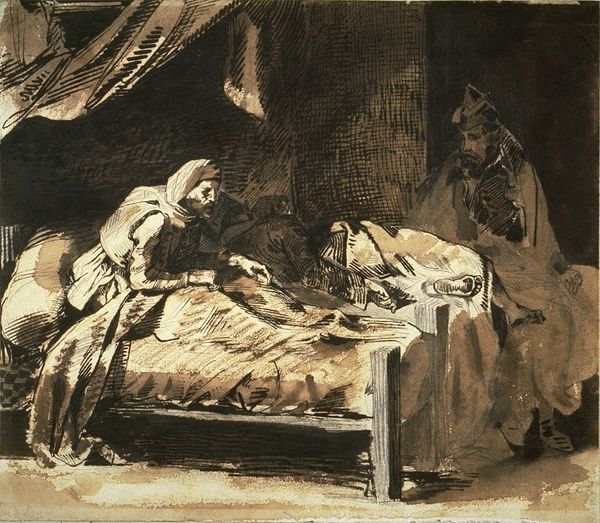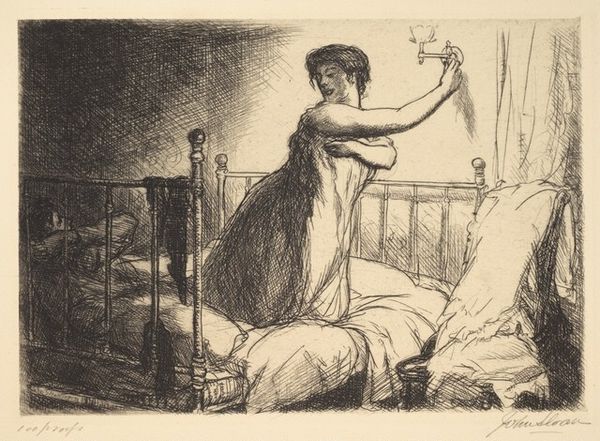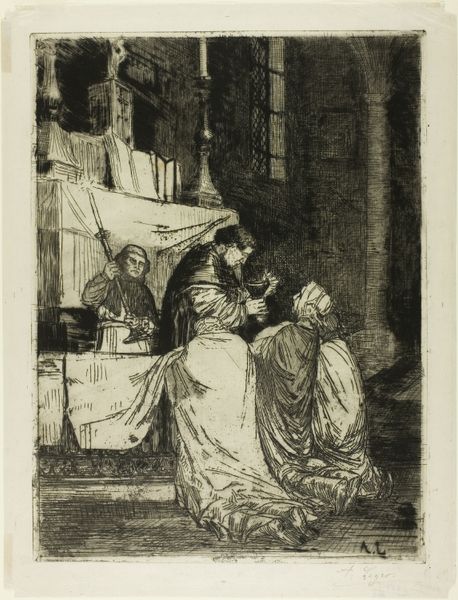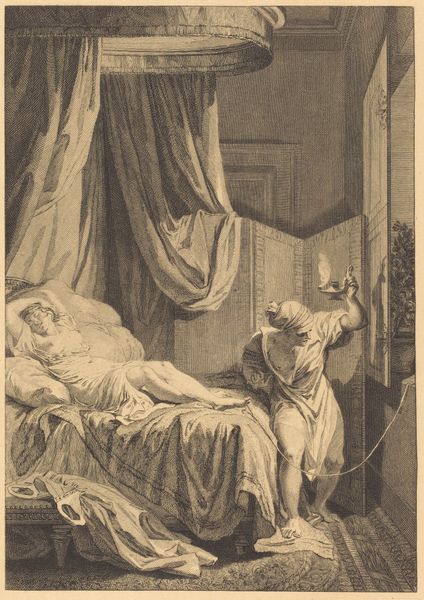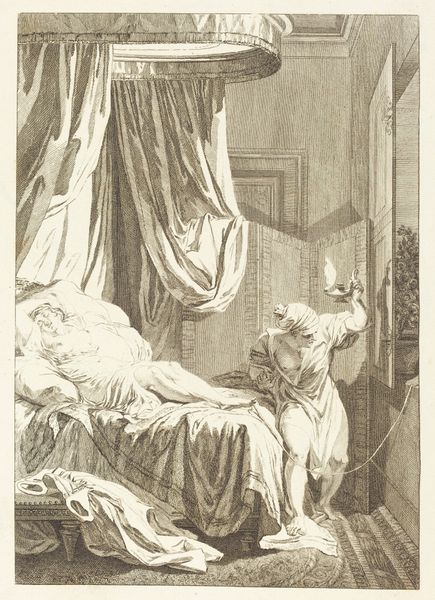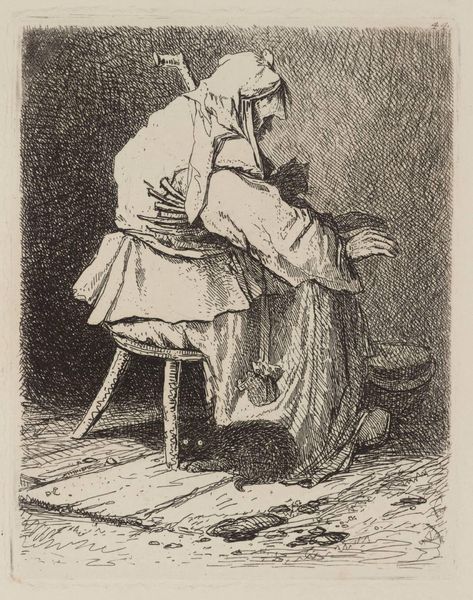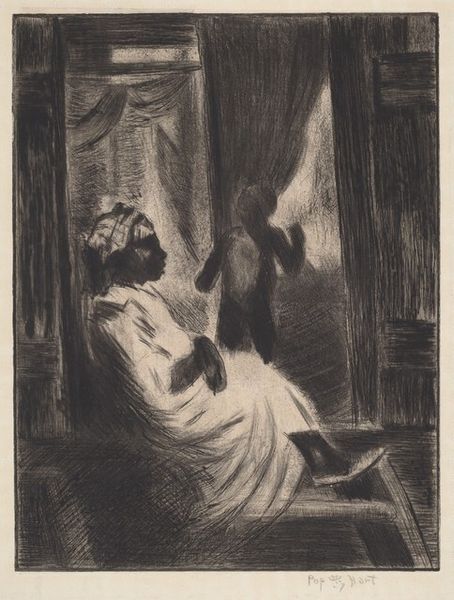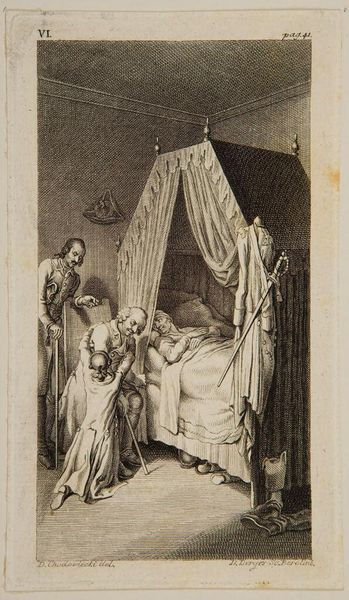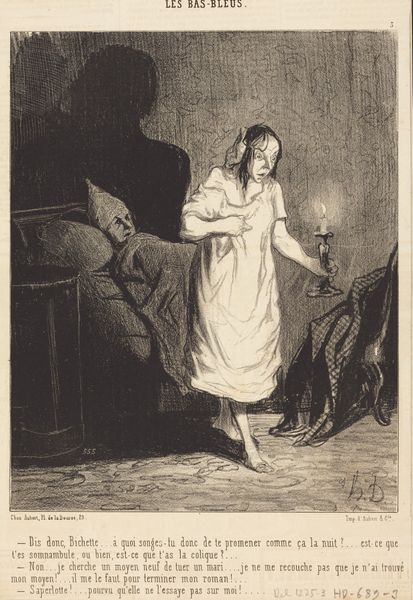
drawing, etching, ink
#
portrait
#
drawing
#
narrative-art
#
baroque
#
etching
#
ink
#
history-painting
Copyright: Public Domain: Artvee
Editor: Here we have Rembrandt van Rijn's "David in Prayer," an etching in ink from 1652. I'm struck by the density of the lines, the palpable texture of the fabrics, and the sense of intimacy. What can you tell me about it? Curator: Look closely at that layering of etched lines, the sheer labor involved. Each mark, a decision; each plate, a process of applying acid, resisting, revealing. It points to a printing culture rapidly evolving. How does the affordability and reproducibility of etchings affect the circulation of religious narratives like David's repentance? Does this intimate depiction democratize faith? Editor: That’s interesting. It’s definitely more accessible than, say, a grand history painting. The small size itself, surely, makes it a portable and perhaps more personal experience. Curator: Exactly. Consider the materials: the ink, the paper, the tools—all commodities within a burgeoning market. Rembrandt isn't just depicting David; he’s engaging with a system of production and distribution. Who had access to these materials? Who controlled their trade? These factors shaped the very image we see. Does the commercial aspect diminish or amplify the spiritual meaning? Editor: I hadn’t really thought about it like that before – how the economics of art making shaped the subject. Thanks, I will carry on this type of approach from now on! Curator: Understanding those material conditions allows us to unpack the image, to move beyond simple interpretation.
Comments
No comments
Be the first to comment and join the conversation on the ultimate creative platform.

